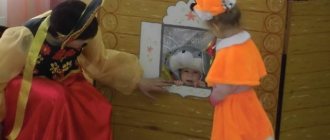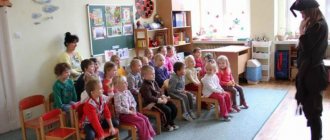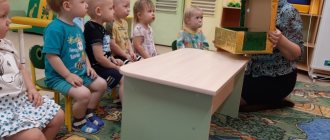Formation of beautiful speech
The problem for many kids is speech. Some people can’t pronounce sounds, some people can’t form sentences, some people have problems with parasitic words. An acting school will also help in all these situations. During lessons, teachers devote enough time to oratory. Children read tongue twisters, learn to breathe correctly, and do articulation exercises. At theater courses for children aged 3–5 years, pupils learn poems - at this age this is a natural need of a child, and do finger exercises to develop fine motor skills (and therefore speech).
Fighting Fears
The fear of public speaking is considered to be one of the most common in the world. Children are also susceptible to it, and the older the child becomes, the more discomfort he may experience while speaking in public. Theater courses for children solve this problem. After just a few lessons, the child becomes more confident in himself, begins to improvise, and opens up. He gains experience and tools for public speaking. And he ceases to be afraid of speaking in front of the public.
Consultation for teachers “Theater studio in kindergarten”
Tatiana Korableva
Consultation for teachers “Theater studio in kindergarten”
The theater studio in our preschool educational institution works according to a program created on the basis of the educational development program of A. V. Shchetkin “ Theatrical activities in kindergarten ”
and Chereshneva O. A. “Development of communicative abilities through
theatrical activities ” using game techniques of the “Little Actor”
by T. S. Grigorieva.
Program objectives:
— formation of cognitive interest in the performing arts, consistent introduction of children to types of theater , education of theatrical culture in preschool children;
- development of visual and auditory attention, memory, observation, resourcefulness, fantasy, imagination (ability to transform, reduction of tightness and stiffness;
- development of an ear for music, a sense of rhythm, plastic expressiveness (the ability to use gestures, facial expressions, create images of living beings using plastic movements);
- development of speech breathing, correct articulation, diction, expressiveness of speech and intonation (develop the ability to use intonations that express basic feelings);
Contents of the " Theatre Studio "
: gaming exercises, didactic and
theatrical games are of a bright creative nature, provide for the possibility of self-expression, creative improvisation, invention, and fantasy.
Children perform in front of audiences with performances of fairy tales and plays. This contributes to the realization of the child’s creative powers and spiritual needs, emancipation and increased self-esteem. The alternation of the functions of performer and spectator, which the child constantly takes on, helps him demonstrate his position, skills, knowledge, and imagination.
Theatrical games and performances allow children to immerse themselves in the world of fantasy with great interest and ease, and teach them to notice and evaluate their own and others’ mistakes. Children become more relaxed and sociable; they learn to clearly formulate their thoughts and express them publicly, to feel and understand the world around them more subtly.
Forms and mode of classes in the theater studio .
The program lasts four years. It is assumed that it is possible to begin training from any moment the child enters the studio , since in teaching the basics of acting it is impossible to gradually teach the child stage speech and then movement, since all these types of activities are interconnected.
The leading forms of organizing classes are group, subgroup and individual. Forms of monitoring the assimilation of program material are diagnostics of children’s creative and speech abilities, open theatrical events , staging performances for parents and kindergarten students .
In the process of implementing the program, the following forms of work with children are used:
• reading and joint analysis of fairy tales, composing fairy tales;
• work on the performance;
• theatrical play;
• rhythmoplasty;
• culture and technique of speech;
• drawing and coloring the most vivid and emotional events from fairy tales with verbal commentary and explanation of the personal meaning of the events depicted;
• pantomime sketches and exercises;
• breathing and articulation gymnastics, finger games;
• learning poems, fables, sayings.
There are rules for working with children in a theater studio :
• select children for roles taking into account their own desires;
• start with simple things to instill confidence in your abilities and give you the opportunity to feel the results;
• encourage all children to act out the work of art being studied;
• trace what roles were played by each child, what were his main achievements.
• when repeatedly playing out a fairy tale, short story, history, remember the need to maintain the freshness of children’s perception of the work , therefore you need to use different types of theater , set new artistic tasks, and avoid too frequent rehearsals.
Developmental activities in the theater studio include techniques appropriate for preschool age children:
1. Listening and playing short fairy tales, fables and poems allows children to discover different moral categories and moral concepts. Children emotionally experience the content of a fairy tale, then creatively reflect the events taking place in it through the characters. They come up with their own content for a familiar fairy tale. They act out a situation of their own making. This method makes it possible to subtly influence the personality of an older preschooler, to encourage him to think and choose his own position. Ethical works such as the poem “We Quarreled”
A. Kuznetsova,
“Hide and Seek”
by Z. Alexandrova, fables by I. Krylov
“The Dragonfly and the Ant”
,
“The Magic Dream”
by I. Vygotskaya,
“Tuzik”
by A. Prokofiev, fairy tales
“Little Red Riding Hood”
by Ch. Perrault, Russian folk tale
“Teremok” "
.
2. Creative tasks are aimed at acting out life situations that form a positive image of the characters. Children are invited to complete various creative tasks, for example:
- show how dad gives mom flowers and says nice words to her;
- assignments - sketches: “Show the taste of an apple”
, “Delicious candies”,
“Flowers”
,
“Pretend what’s in the box”
, pantomime game
“Guess who the puppy met?”
,
“Transformations of an object”
,
“How to turn a Cinderella mother into a Princess mother”
and others.
3. Rhythmoplasty exercises help to understand the character of each character depicted: children love to do exercises: “Bears in a Cage”
, where you need to depict the movements of a mother bear and little stupid bear cubs.
“Bird yard”
- movements of different birds.
In the fairy tale “The Bunny and the Hedgehog”
, the Bunny is a good hero, and he must be played cheerfully and cheerfully.
The hedgehog is a hard worker. He walks slowly; he is very affectionate and treats everyone to an apple or berries. “Let's Meet the Sun”
exercise, children understand that if the sun is in the sky it is always good, everyone on earth is in a wonderful mood.
To meet him you need to spread your arms wide, open your eyes and smile. Children enjoy doing exercises for their hands, because the hands are the main organ of movement from the actor’s point of view. They can tell the audience a lot: “Guess what I said with my hands?”
,
“Draw fish fins, waves, flower petals, etc.”
,
“Tell poems with your hands”
,
“Enchanted child”
(show various objects and phenomena with gestures"
4.Musical and rhythmic improvisations: “Autumn Leaves”
,
“Clouds are floating”
,
“Butterflies”
.
When performing improvisations, musical excerpts from the works of D. Kabalevsky “The Moth”
, E. Grieg
“Morning”
, M. Mussorgsky
“Dawn on the Moscow River”
, waltzes, marches and other musical melodies that encourage movement and emancipation are used.
5. There are different types of theatrical games . The purpose of theatrical games is to develop attention, imagination, observation, to develop the ability to express one’s emotions, to transform into the images of heroes, to develop clarity of speech, rhythm, and a culture of dialogue. For example: the theatrical game “The Same Thing in Different Ways”
develops the imagination and imagination of children, because the same action looks different in different conditions: “Imagine how you can sit... in front of the TV at home, or in the doctor’s office, or with a fishing rod on the river bank, or at the chessboard.”
The games “Birthday”
and
“Cooks”
involve actions with imaginary objects. Children love to pretend to be animals and birds, heroes of familiar fairy tales, and even vegetables and fruits or various dishes and dishes.
6. The fairytale therapy method is used to develop creative initiative, the ability to overcome childhood fears , to reduce anxiety and aggressiveness, and to accumulate positive communication experience in a group of peers. For example, when meeting the emotion “fear”
Having told the horror tale
“The Scarecrow”
or
“Karabas-Barabas”
, the teacher asks the children whether it was scary to listen to it and why?
To find out the reasons for children's fears , children are invited to draw their own Fear.
The children drew the objects they are afraid of - snakes, dogs, spiders. To make the fear go away, you need to crumple the piece of paper with the design into a ball and throw it away. This is how Fear goes away. 7. To develop the ability to control oneself in problematic or traumatic situations, Olga Vladimirovna uses theatrical sketches in which the child plays the roles of weak and self-confident, timid and brave heroes: “Guess and portray the emotion”
,
“Harmful Ring”
,
“Brave Boy”
,
“Snake Gorynych”
,
“In a Dark Hole”
. In games for the development of facial expressions and pantomime, you can offer children a card with an image of a fairy-tale hero and show how this fairy-tale hero walks, how he sits on chair, how he washes his face and brushes his teeth, how he plays the piano, how he eats his favorite dish.
Children love to portray the different moods of the hero of N. Pomerantsev’s poem “Different Moods”
8. The feedback method is aimed at reflecting the emotional attitude of children to an event that happened in a theater group through drawing, composing stories, fairy tales, expressing their impressions, playing out the moods of the characters.
The topics of conversation and discussion of the rules of etiquette are clear and interesting to children: “Do unto others as you would like them to do unto you.”
,
“All professions are important, all professions are needed”
,
“Cleanliness is the best beauty”
In conversations about the theater , the teacher together with the children discusses the questions: what is etiquette, how to dress for the theater , how to enter the theater , how to sit during the action , what to do during intermission, is it possible , drink and chew gum the theater During the school year, children, together with the teacher, systematically attended performances for children at the Drama Theater . Dostoevsky, at the Maly Theater . We made excursions to museums and libraries in the city.
The success of children mastering creative initiative largely depends on the interest of parents. Theatrical meetings to increase parents' interest in theatrical activities , where parents were active participants and partners in playing roles in performances, making costumes for children, and making attributes of theatrical performances . At matinees in kindergarten , parents greet their child actors with loud applause and rejoice when they see their previously shy and shy children in the roles of various heroes, brave and decisive, funny and kind. They applaud good storytellers who do not just read poetry, but accompany their reading with bright, figurative gestures, facial expressions, plasticity, and movements.
The expected results were visible by the end of the academic year, they were correlated with the objectives and content of the program.
The results of the diagnostics made it possible to verify the correctness of the chosen line of development. Currently, children of the preparatory group actively respond to visiting the theater , to dramatic performances on their own, independently distribute among themselves the responsibilities for designing the scene, choosing costumes, distributing playing roles, actively using role-playing speech, pantomime during dialogues with partners in theatrical activities , in in a quiet mode, they can replace an absent partner in a theatrical production .
Intellectual and emotional development
Theater studio for a child from 5 years old involves broadening his horizons. As children grow older, classes in world music, literature, and cinematography are added. Children get acquainted with great works of art, memorize excerpts from stories and plays.
Later, in primary school and adolescence, children will experience the moods and characters of literary heroes during rehearsals and performances. Preschoolers are asked to simply name the emotions of the characters in poems and fairy tales, and also to depict them in short scenes.




